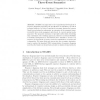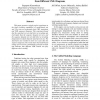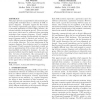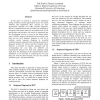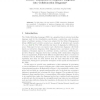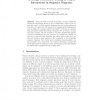150
click to vote
WCRE
2010
IEEE
14 years 11 months ago
2010
IEEE
—We present a semi-automated approach for the reverse engineering of UML sequence diagrams. Our approach starts with a set of execution traces that are automatically aligned in o...
114
click to vote
DAGSTUHL
2003
15 years 2 months ago
2003
STAIRS is an approach to the compositional development of sequence diagrams supporting the specification of mandatory as well as potential behavior. In order to express the necess...
106
click to vote
SNPD
2008
15 years 2 months ago
2008
This paper presents a single project experiment on the fault revealing capabilities of model-based test sets. The tests are generated from UML statecharts and UML sequence diagram...
101
click to vote
ICSE
2000
IEEE-ACM
15 years 4 months ago
2000
IEEE-ACM
This paper presents an algorithm for automatically generating UML statecharts from a collection of UML sequence diagrams. Computer support for this transition between requirements...
122
click to vote
KBSE
2002
IEEE
15 years 5 months ago
2002
IEEE
In this paper we present a concept for automated testing of object-oriented applications and a tool called SeDiTeC that implements these concepts for Java applications. SeDiTeC us...
AGTIVE
2003
Springer
15 years 6 months ago
2003
Springer
In this paper, the two types of UML interaction diagrams are considered. A translation of sequence diagrams into collaboration diagrams is constructed by means of graph transformat...
ER
2004
Springer
15 years 6 months ago
2004
Springer
A sequence diagram in UML is used to model interactions among objects that participate in a use case. Developing a sequence diagram is complex; our experience shows that novice dev...
130
click to vote
CCS
2004
ACM
15 years 6 months ago
2004
ACM
Security must be a first class citizen in the design of large scale, interacting, software applications, at early and all stages of the lifecycle, for accurate and precise policy ...
98
Voted
ATAL
2004
Springer
15 years 6 months ago
2004
Springer
In this paper we present an agent-oriented modeling language, called MAS-ML, and an approach for mapping its diagrams into Java implementations. MAS-ML extends the UML meta-model ...
117
click to vote
FASE
2005
Springer
15 years 6 months ago
2005
Springer
This work defines several control-flow coverage criteria for testing the interactions among a set of collaborating objects. The criteria are based on UML sequence diagrams that a...

